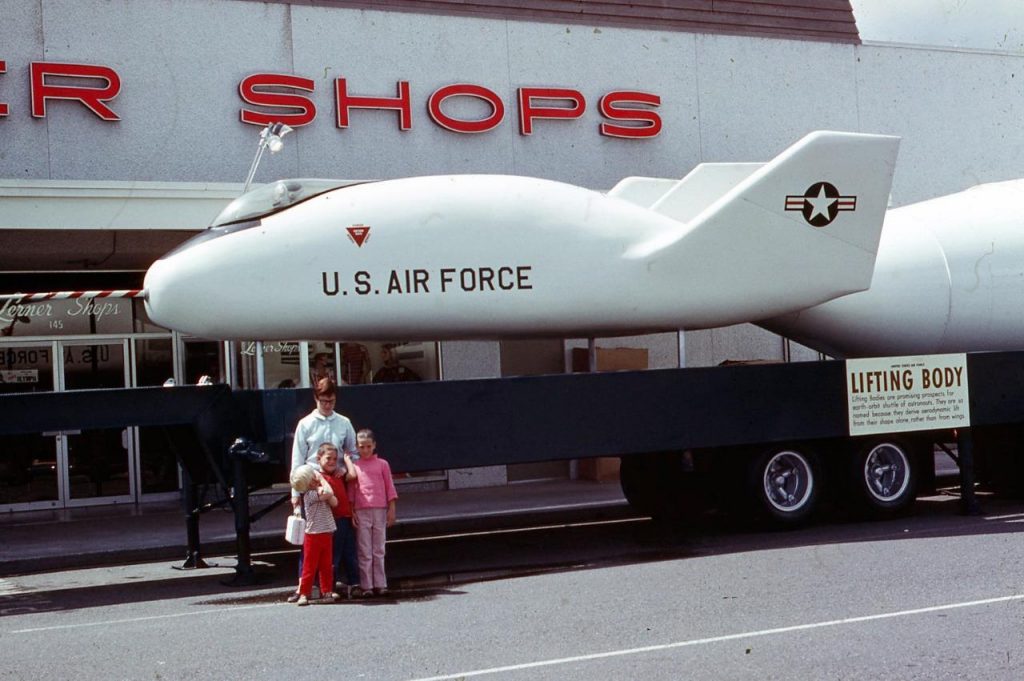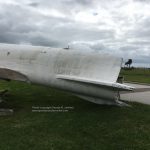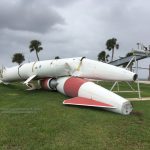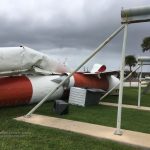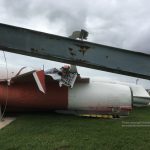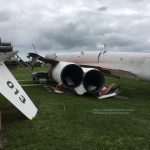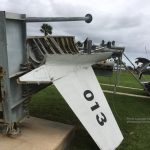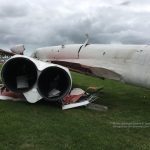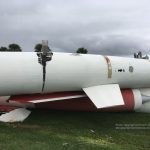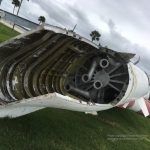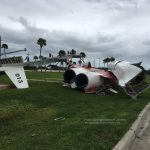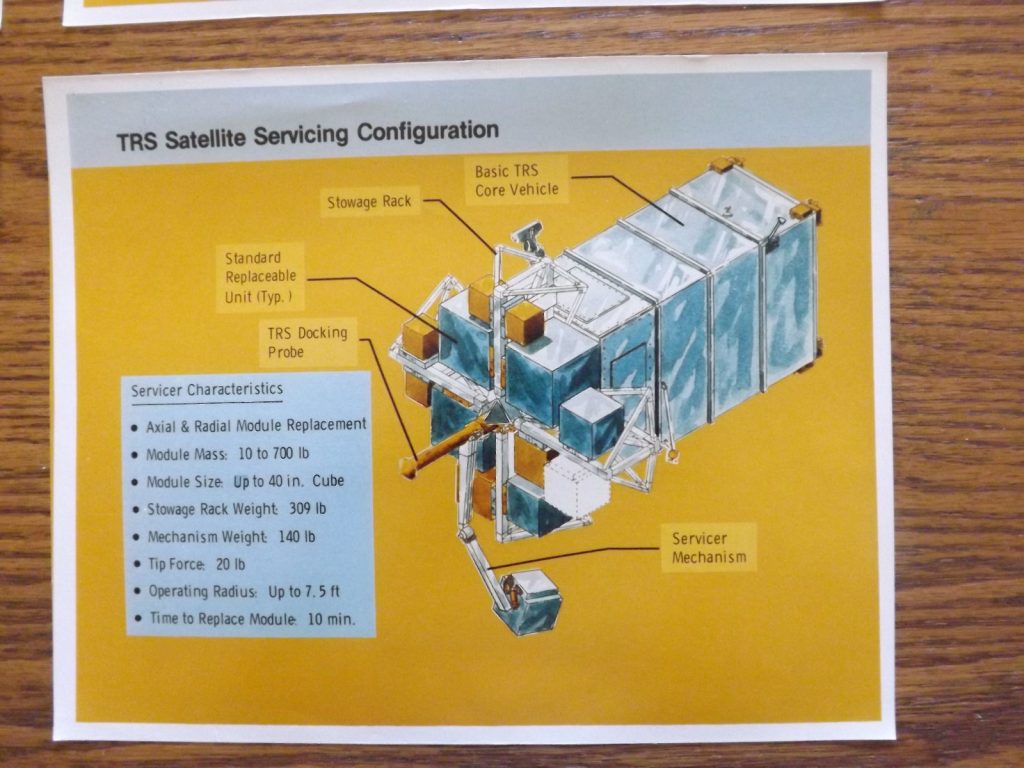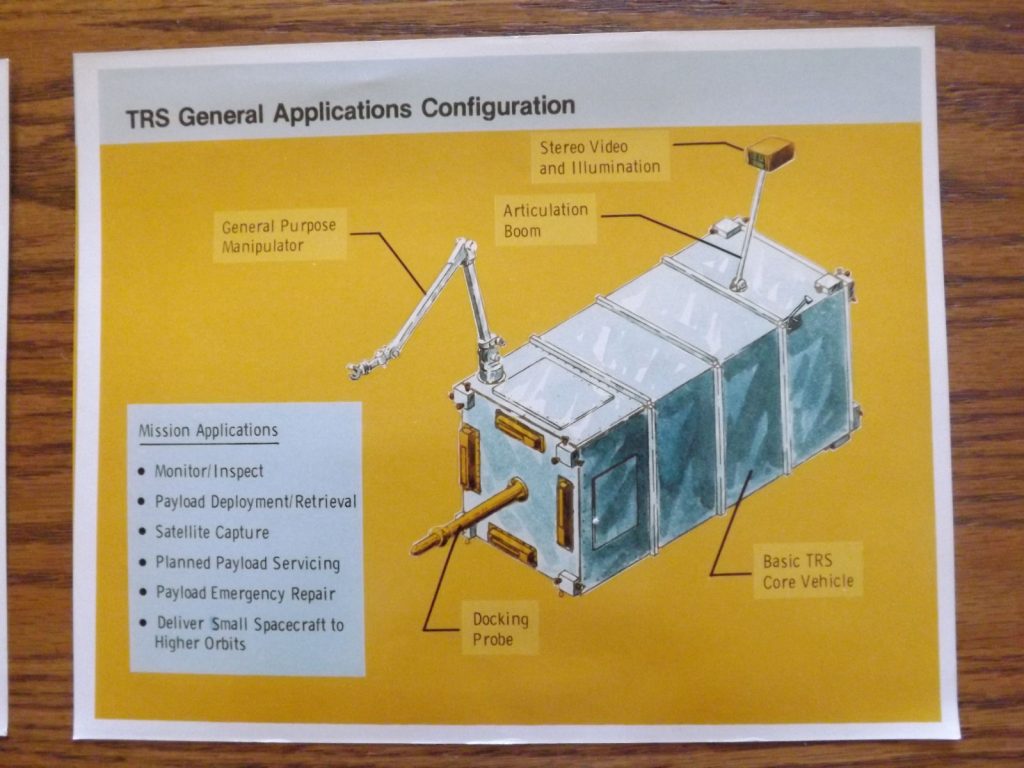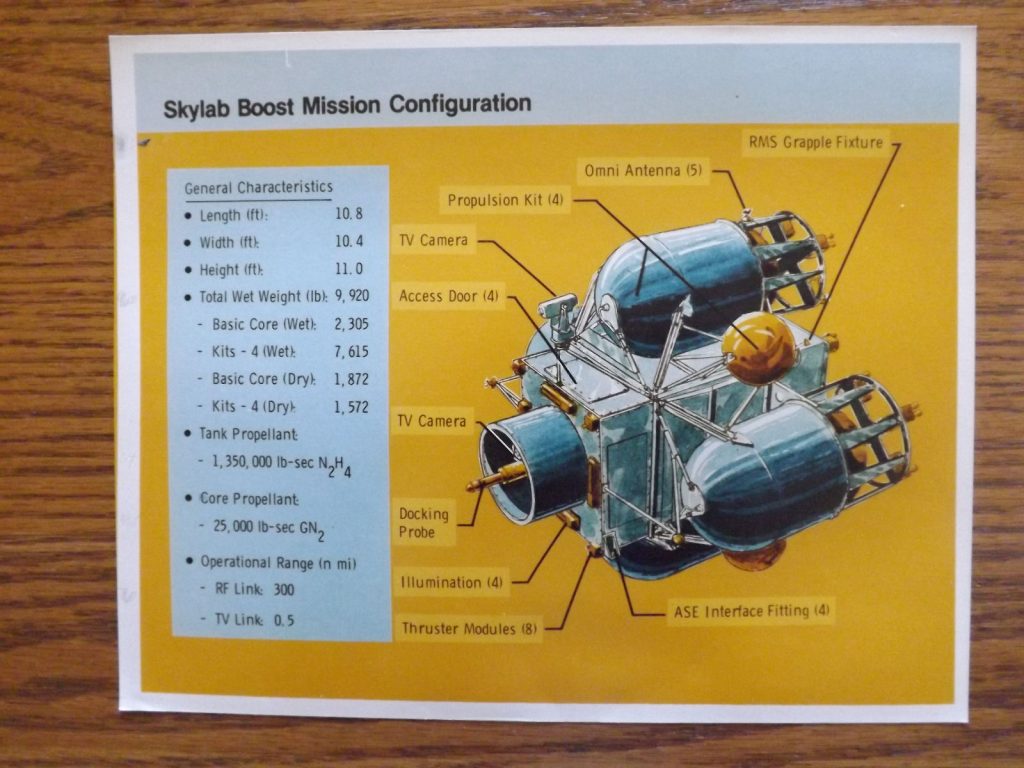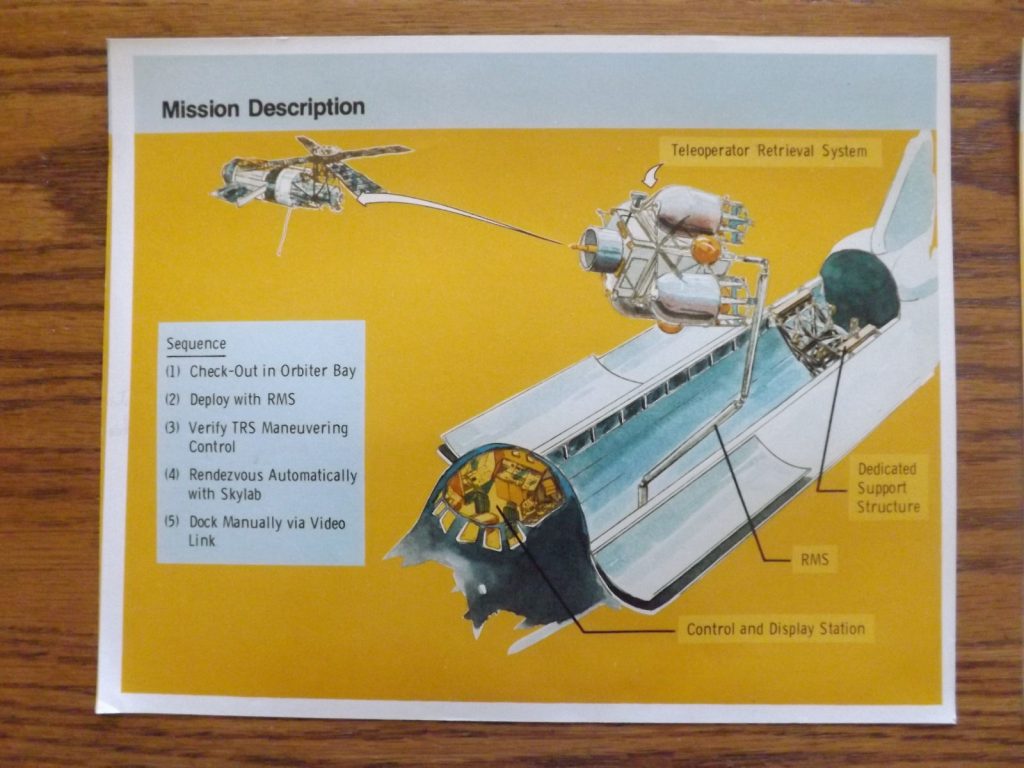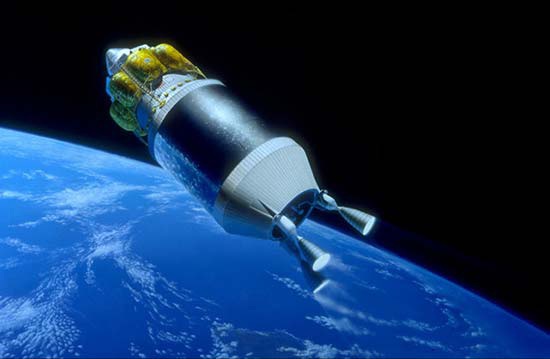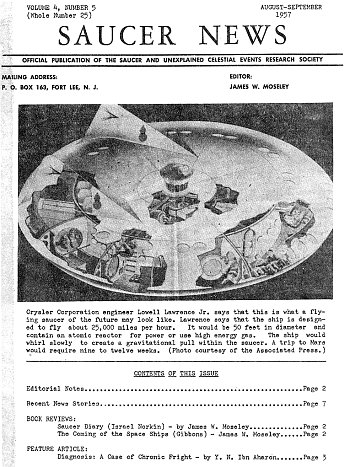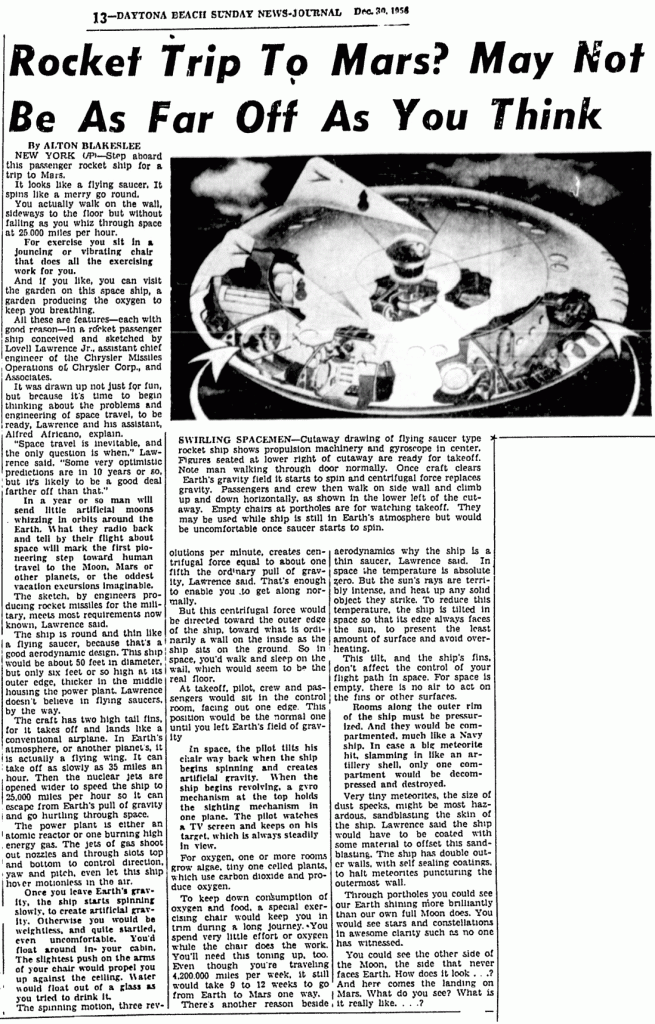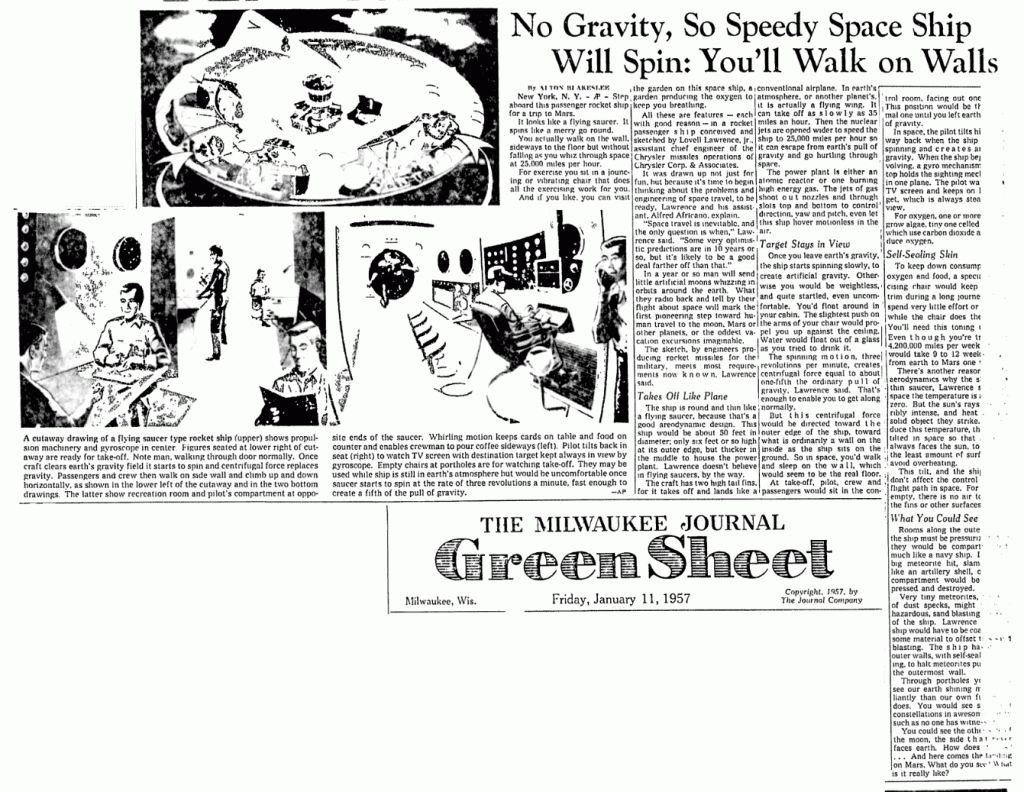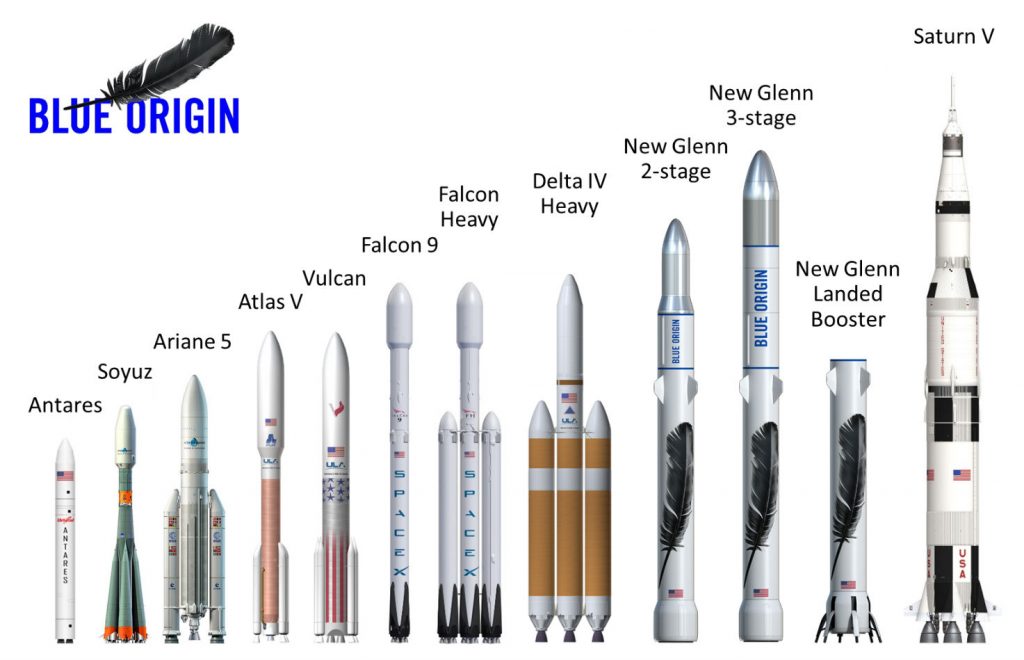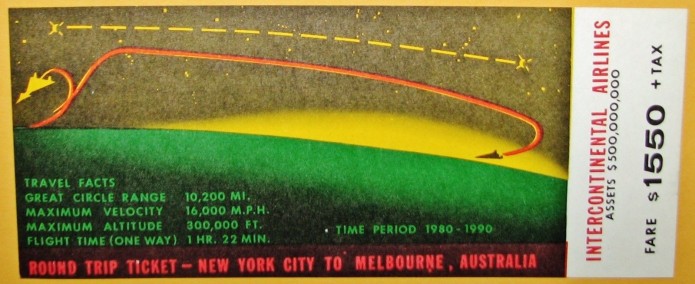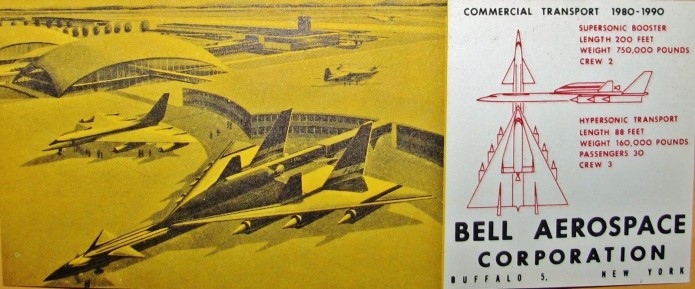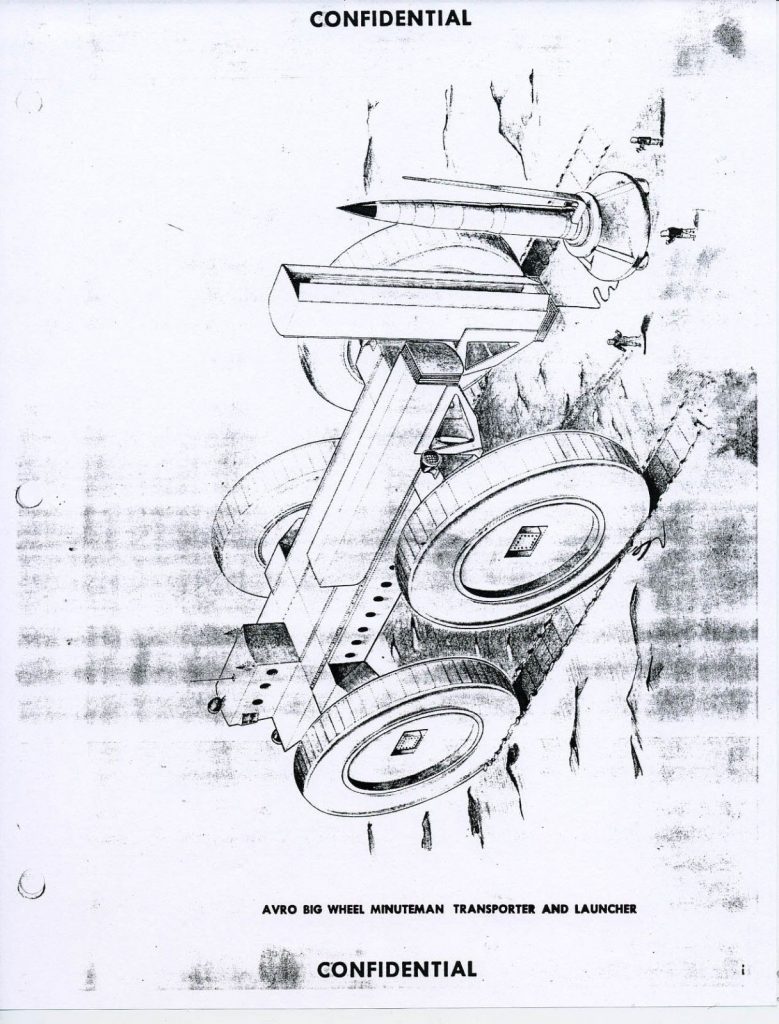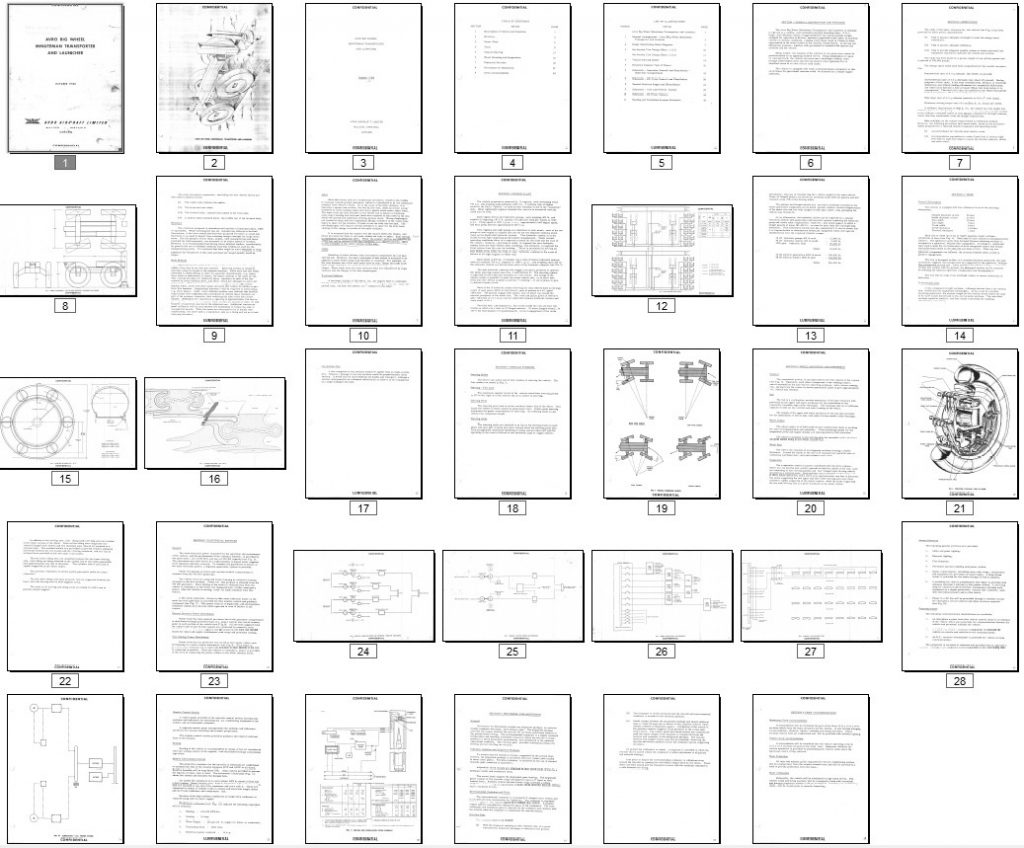Currently on ebay is a single slide, a photo someone took in the 1960’s. It shows a family standing in front of a full-scale mockup of the SV-5, what became the X-24A. This is hardly an unknown mockup; it has been shown elsewhere many times. But I thought this particular view might be of interest to some. It is shown on the back of a truck for transport, attached to a transition section that would, on the real vehicle, then attach to a launch vehicle such as a Titan II or III.
While Kennedy Space Center did not receive the apocalyptic death blow from hurricane Matthew that some were projecting, that doesn’t mean that the storm passed without causing damage. One sad casualty was the SM-64 Navaho missile and booster on display at Cape Canaveral Air Force Station; it has been *badly* damaged. Restoration will be a chore… assuming that it is restored.
These photos came to me from aviation historian/writer Dennis R. Jenkins. If you post ’em, make sure to point that out.
On ebay a little while back were some pieces of art illustrating some Martin Marietta concepts for teleoperated spacecraft. Included was an idea for a Skylab reboost spacecraft to be carried by the Shuttle. The reboost spacecraft would, it seems, be based on a simpler spacecraft to be used for general satellite repair, recovery and reboost.
A piece of NASA art illustrating a lunar-bound craft equipped with three relatively small nuclear thermal rockets. The payload is a lunar lander, similar in appearance to the “First Lunar Outpost” landers of the early 1990s, dating the art. To my eye this looks a bit dubious from the standpoint of nuking the crew… the reactors aren’t that far from them, what with the rather short hydrogen tank. *Perhaps* this was intended to be sent to lunar orbit unmanned, there to be met by a crew sent via chemical rockets. For lunar missions the utility of nuclear rockets would not be in getting payloads to the destination sooner; three days just isn’t that long, really. The advantage would be in sending *massive* payloads. So a small manned capsule sent chemically and a big heavily loaded lander sent via nukes might well make considerable sense.
There was a time when American auto manufacturers had important aerospace divisions. Chrysler, for example, was responsible for rockets such as the Redstone, Jupiter and the Saturn I and Ib first stage.
In late 1956, Lovell Lawrence Jr, an assistant chief engineer at the missiles division of Chrysler, publicized a concept for a nuclear-powered “flying saucer.” It seems to have been *partially* a reasonably rational concept for a long duration spacecraft for missions to Mars. It would spin like a frisbee to generate artificial gravity, though the relatively small radius would be likely to produce some harsh Coriolis effects. The saucer would be about 50 feet in diameter and only 6 feet thick.
Where the design goes a bit off the rails is that the performance expected of the craft was insanely impressive. It was a single-stage-to-solar-orbit craft, capable of taking off horizontally from a runway using nuclear-powered jet engines (note: “jet” in this case might mean “rocket.”) The craft would be capable of going from the Earth to Mars in 9 to 12 weeks.
Being that close to an atomic reactor (with a light enough shield to allow the thing to take off) would be a death sentence long before the craft would get to Mars.
After years of trying to research this concept, all I’ve managed to scrape up are three things from Ye Olde internet: two newspaper articles and one cover story from a UFO “fanzine.” I have tried over some years to obtain a copy of the “Saucer News” from August-September 1957 from sites like ebay, but without success. It seems like an original printing, or at least a decent scan, would provide a reasonably good version of the Chrysler saucer art.
Jeff Bezos of Blue Origin has described a new rocket his company is working on , the “New Glenn.” It’s kinda big:
The “New Glenn” will be 27 feet in diameter (close to the Shuttle External Tank, it seems), 270 feet tall in a two-stage configuration and 313 feet tall in a three stage configuration. The first stage is recoverable, landing vertically under rocket power. It will have seven BE-4 engines burning natural gas and oxygen, producing 3.85 million pounds of thrust. The second stage uses a single BE-4 engine with an increased expansion ratio. The third stage uses a LOX/LH2 BE-3 engine.
The article says that Bezos has claimed that the rocket will fly “within the decade.” If that means by the end of 2019, that’s pretty ambitious.
Something funny seems to be going on with the blog… the menus have disappeared.
Hmm.
Produced by Bell Aerospace around 1960 as a promotional item was this “ticket” for a flight from New York City to Melbourne, Australia. The aircraft shown was a two-stage hypersonic passenger transport; the first stage was essentially a supersonic transport equipped with turboramjet engines; it carried on its back a rocket powered passenger spaceplane. At the time it was pushed by the likes of Walter Dornberger, who had previously publicized a two-stage all-rocket powered hypersonic transport. There was some link between this design and the Dyna Soar program, but it is unclear just how involved the engineering was on the HST. Artwork was produced and a good display model, but it’s hard to tell if it went any further than that.
I have uploaded high-rez scans (600 dpi) to the 2016-09 APR Extras folder on Dropbox. This is accessible to all APR Patreon patrons at the $4 level and above.
Military hardware design programs often have code names that are random or nearly so, so you can’t figure out what they are if you overhear them. Concepts like “Have Blue” or “Copper Canyon” or “Science Dawn” or even “Silver Bug” are pretty opaque. But every now and then there are concepts like Avro Canada’s 1960 idea for a truck capable of carrying and launching two Minuteman ICBMs: “Big Wheel.” For once, the name matched the product.
One wonders what sort of career these might have had in the Monster Truck circuit after they became obsolete.
This is a document I scored off ebay a little while back; it arrived and I’ve scanned it and will include it in the very next APR Patreon catalog. If you’d like a copy, a monthly contribution of as little as $4 will get you the full-rez 300 dpi scan of each months reward documents and diagrams… currently, three documents, one large-format diagram or piece of artwork. That’s a buck an item. Give the APR Patreon a look.
An early/mid 1960’s concept model of an interplanetary spacecraft using a nuclear fusion powerplant. Back then there was a LOT of faith in the idea of fusion reactors being just around the corner. One very obvious design flaw? No radiators. Any internal-fusion system (or internal-fission, for that matter) would need *vast* radiator surface area.
Details on the photo are unavailable. I originally downloaded this image from the GRIN (Great Images in NASA) website, which has now been closed in favor of a Flickr account that is difficult to search. Feh. If you want the full-rez version *another* Flickr account has it HERE.
